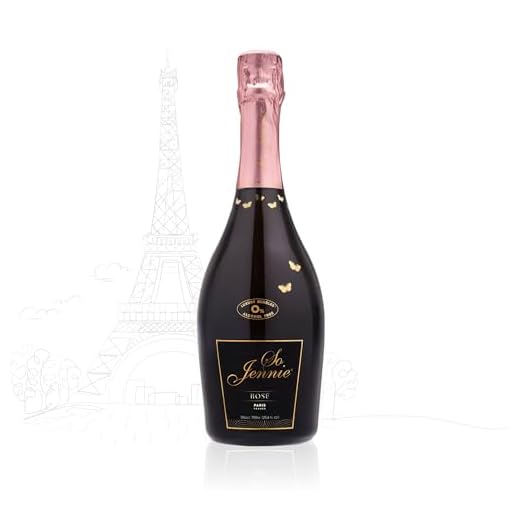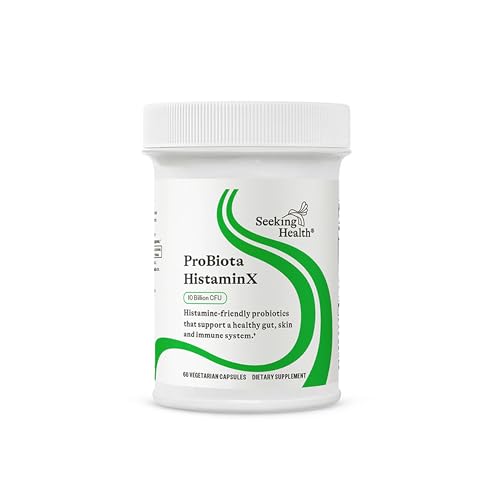





Expect to invest between $10 and $30 for a decent selection of this delightful pink drink. The range largely depends on the region of origin, grape variety, and quality of the producer. For everyday enjoyment, options around $15 often provide excellent flavor and balance.
Exploring offerings from regions like Provence in France can yield exceptional choices. Many notable producers in this area deliver bottles priced around $20, showcasing the signature crispness and fruitiness that rosés are celebrated for. If you’re looking for something special, consider premium options that may reach $50 or more, often from small, artisanal vineyards.
Don’t overlook local wineries as well; many domestic producers craft outstanding varieties at competitive prices. Stores frequently carry a selection of these, providing chances to discover hidden gems without breaking the bank. When selecting, pay attention to vintage and reviews to ensure quality and satisfaction.
Average Prices for Common Brands
For quality selections, you can expect to pay approximately $10 to $20 for popular brands such as Whispering Angel and Miraval. These options are widely favored for their balance and flavor profile, making them ideal for casual gatherings or picnics.
Moving up the scale, wines like Château d’Esclans Rock Angel and Domaine de Cala can range from $20 to $30. These selections often exhibit more complexity, enhancing the tasting experience, especially during meals.
If you’re intrigued by premium offerings, consider brands such as Chandon Rosé or Dom Pérignon Rosé, where prices can start around $40 and escalate to $200 or more. These are exceptional for special occasions, delivering exquisite flavors and aromas.
In summary, whether you’re seeking affordable options or splurging on luxury, there’s a wide spectrum of choices available to suit every occasion and palate.
Factors Influencing the Cost of Rosé Wine
The price of a pink beverage can fluctuate significantly due to various elements. Here are the key aspects I consider when evaluating the cost:
- Region: The geographical area plays a crucial role. Regions known for premium production, such as Provence in France or areas in California, often yield higher prices due to their reputation and quality.
- Production Methods: Traditional techniques, like hand-harvesting and limited production, increase labor costs, subsequently raising the price. Organic or biodynamic practices also contribute to higher expenses.
- Grape Variety: Certain varietals command higher prices based on their popularity and rarity. For example, wines made from Grenache or Mourvèdre may be more sought after, influencing their market value.
- Aging Potential: Wines crafted for aging typically cost more. Those designed to be consumed young may be less expensive, while complex, age-worthy selections can demand a premium.
- Brand Reputation: Established labels with a history of quality often charge more. Consumers are willing to pay extra for recognized names that guarantee a certain standard.
- Market Demand: Trends and consumer preferences can drive prices up. A sudden surge in popularity can lead to increased costs for certain styles.
- Packaging: Unique or high-quality packaging can also affect the final price. Elegant bottles and labels often come with added costs that are reflected in retail pricing.
Understanding these factors allows for smarter purchasing decisions and helps identify quality selections that offer great value. Exploring lesser-known producers or regions might yield fantastic finds at more accessible prices.
Comparing Budget vs. Premium Options
For those seeking value, exploring affordable selections can yield delightful discoveries. Many quality choices are available in the $10 to $20 range, offering refreshing flavors and pleasant acidity. Brands like Whispering Angel and Miraval provide enjoyable profiles without breaking the bank, making them ideal for casual gatherings.
On the other hand, splurging on premium selections can elevate your experience. Expect to invest $30 and up for notable labels such as Domaines Ott and Chateau d’Esclans. These high-end choices often boast complex aromas and nuanced tastes, crafted from superior grapes and meticulous production methods. The investment can be rewarding, particularly for special occasions or sophisticated pairings.
Key Differences
Budget options typically emphasize drinkability and approachability, perfect for everyday enjoyment. In contrast, premium varieties often showcase unique terroir expression and aging potential, appealing to connoisseurs and those looking to impress. The choice ultimately hinges on your occasion and personal preferences.
Recommendation
Try blending both categories in your collection. Keep affordable selections on hand for casual sipping, while reserving premium options for memorable meals or celebrations. This approach provides versatility and ensures you’re well-prepared for any gathering.
Where to Buy Affordable Rosé Wine
Local wine shops often have a curated selection of value-driven options. Visit establishments that prioritize customer education; ask staff for recommendations based on your budget. Chain retailers frequently offer competitive pricing and promotional discounts, especially during seasonal sales.
Online Retailers for Competitive Prices
Online platforms like Vivino and Wine.com provide extensive inventories and user reviews, making it easier to find budget-friendly selections. Many websites offer exclusive deals or discounts for first-time customers. Subscribing to newsletters can alert you to flash sales or special offers.
Warehouse Clubs and Bulk Purchasing
Membership-based stores, such as Costco or Sam’s Club, are great for securing lower prices on larger quantities. Buying in bulk not only reduces the cost per unit but also ensures you always have a supply on hand for gatherings. Always check for member-only deals that can enhance your savings.
Exploring local farmers’ markets can also unearth unique finds at reasonable prices. Often, vendors sell directly from vineyards, providing an opportunity to sample before purchasing. Look for pop-up wine events in your area where you can taste and buy directly from producers.
Seasonal Price Variations for Rosé Wine
Prices for pink varietals fluctuate significantly throughout the year, often peaking in warmer months. During spring and summer, demand increases as consumers seek refreshing options for outdoor gatherings and celebrations. This uptick can lead to higher price points, particularly for popular labels. Conversely, fall and winter months typically see a decrease in interest, resulting in more competitive pricing and potential discounts.
Holidays and festive seasons also impact costs. For instance, around Valentine’s Day and summer holidays, the market experiences spikes in pricing due to heightened interest. Retailers may capitalize on this demand, driving up prices for sought-after selections.
Additionally, regional factors play a role. Wines from certain areas may be more expensive during peak tourist seasons, while local producers may offer better deals at harvest time. Always consider timing when purchasing to secure the best prices.
For those looking to combine their passion for wine with practical solutions, exploring options like best solar generators for home backup can enhance outdoor experiences, especially during warmer months when enjoying a glass of pink is most appealing.
Understanding Rosé Wine Labels and Pricing
To make informed choices, familiarize yourself with the key elements on the labels of pink wines you encounter. These labels provide valuable insights that can help you gauge quality and price expectations.
The region of origin often dictates the cost. For instance, wines from Provence, known for their high-quality output, typically command a higher price. Labels that specify terms like “Côtes de Provence” offer assurance of quality and craftsmanship.
Look for information on grape varieties. Popular choices such as Grenache, Syrah, and Pinot Noir can indicate the style and flavor profile, influencing the price point. A blend featuring lesser-known grapes might be more affordable, yet equally delightful.
Production methods can also affect pricing. Wines labeled as “organic” or “biodynamic” are often produced in smaller quantities, leading to higher prices due to the meticulous processes involved. Conversely, mass-produced options might emphasize accessibility and affordability.
Another important aspect is vintage. A current year vintage often costs less than one from a celebrated year. Aged selections may reflect higher prices, particularly if they have garnered acclaim or awards.
Additionally, pay attention to the producer’s reputation. Established brands with a history of excellence tend to carry a premium. New or lesser-known producers often offer hidden gems at attractive prices.
| Label Element | Influence on Price |
|---|---|
| Region of Origin | Higher prices for notable regions (e.g., Provence) |
| Grape Varieties | Popular grapes may cost more; blends might be cheaper |
| Production Methods | Organic or biodynamic wines typically command higher prices |
| Vintage | Older vintages may be pricier, especially from celebrated years |
| Producer Reputation | Established brands often have higher price tags than new producers |
By understanding these elements, you’ll better navigate the shelves and find exceptional selections that fit your budget and taste preferences.
Tips for Finding Discounts on Rosé Wine
Check local wine shops for clearance sections. These areas often feature reduced prices on items that need to be sold quickly, including seasonal selections.
Sign up for newsletters from vineyards and retailers. Many businesses send exclusive offers and promotions directly to subscribers, allowing you to access deals before they are widely advertised.
Utilize Online Platforms
Explore online retailers that specialize in alcoholic beverages. Websites frequently run sales and special promotions, making it easier to find quality options at lower prices.
Consider using apps designed for wine enthusiasts. These tools can help you compare prices across various stores and alert you to discounts.
Join Wine Clubs
Membership in a wine club can yield significant savings. Clubs often provide members with discounted rates on selected varieties and exclusive access to limited releases.
Participate in local wine tasting events. These gatherings not only allow sampling but may offer special pricing on purchases made during the event.
Don’t hesitate to ask staff for recommendations on promotions or upcoming sales. Knowledgeable employees can guide you to the best deals available.








